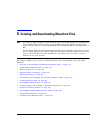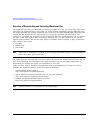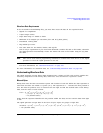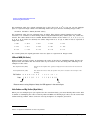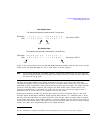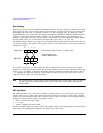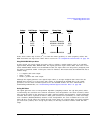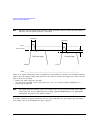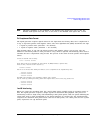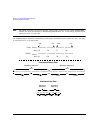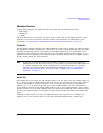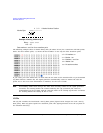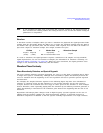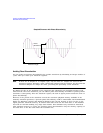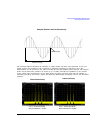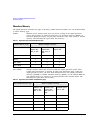
Agilent N518xA, E8663B, E44x8C, and E82x7D Signal Generators Programming Guide 191
Creating and Downloading Waveform Files
Understanding Waveform Data
NOTE FIR filter capability is only available on the N5182A with Option 651, 652, or 654, the
E4438C with Option 001, 002, 601, or 602, and on the E8267D with Option 601 or 602.
2’s Complement Data Format
The signal generator requires signed values for the input data. For binary data, two’s complement is
a way to represent positive and negative values. The most significant bit (MSB) determines the sign.
• 0 equals a positive value (01011011 = 91 decimal)
• 1 equals a negative value (10100101 = −91 decimal)
Like decimal values, if you sum the binary positive and negative values, you get zero. The one
difference with binary values is that you have a carry, which is ignored. The following shows how to
calculate the two’s complement using 16-bits. The process is the same for both positive and negative
values.
I and Q Interleaving
When you create the waveform data, the I and Q data points typically reside in separate arrays or
files. The signal generator requires a single I/Q file for waveform data playback. The process of
interleaving creates a single array with alternating I and Q data points, with the Q data following the
I data. This array is then downloaded to the signal generator as a binary file. The interleaved file
comprises the waveform data points where each set of data points, one I data point and one Q data
point, represents one I/Q waveform point.
Convert the decimal value to binary.
23710 = 01011100 10011110
Notice that 15 bits (0-14) determine the value and bit 16 (MSB) indicates a positive value.
Invert the bits (1 becomes 0 and 0 becomes 1).
10100011 01100001
Add one to the inverted bits. Adding one makes it a two’s complement of the original binary value.
10100011 01100001
+ 00000000 00000001
10100011 01100010
The MSB of the resultant is one, indicating a negative value (−23710).
Test the results by summing the binary positive and negative values; when correct, they produce zero.
01011100 10011110
+ 10100011 01100010
00000000 00000000



